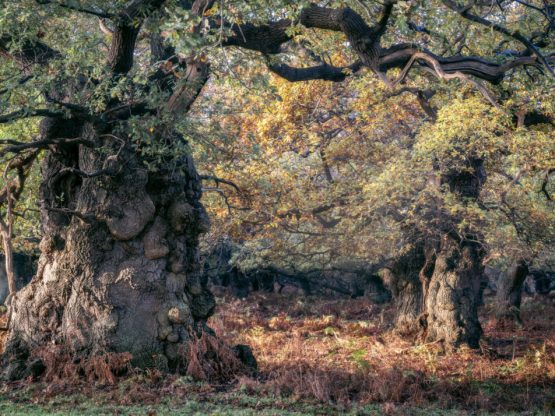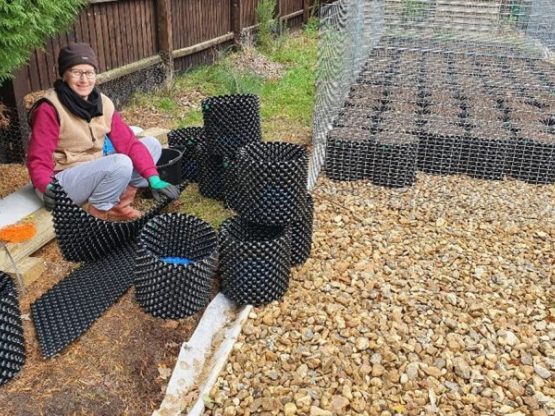Farming in Protected Landscapes Case Study:
Staverton Woods and The Thicks

For Year 2 of the Farming in Protected Landscapes programme, £73,723 was awarded to Wantisden Hall Farms for an exciting project to future-proof and manage these woodlands which are internationally recognised sites of great biological and historical significance.
The ancient wood pastures of the Staverton Woods and The Thicks is often described as one of the most important surviving areas of wood pasture in England. Consisting of over 80ha of close-set oak pollards, it was first recorded in 1268, although it may have much earlier origins.
It was Professor Oliver Rackham’s favourite place, and he described it in his seminal work, The History of the Countryside: ‘Sometimes a park has its original trees.
The supreme example is Staverton Park, a famous and awesome place of Tolkienesque wonder and beauty’. He also refers to the Park’s ‘4,000 amazing medieval pollard oaks, and some of the mightiest hollies, birches and rowans in the country.’
Objectives
The focus of the project is to increase the future-proofing of Staverton by growing locally-sourced oak and hawthorn saplings in a new tree nursery, planting and maintaining these saplings in the park, on field boundaries and for parkland creation and restoration, and protecting naturally regenerated oak and hawthorn found growing within the park. Such efforts will help to ensure the long-term survival of the park and the valuable ecosystems within.
What is being done?
The work will involve creating a new tree nursery, to safeguard the future of the oaks. Fortunately, this year has produced a great acorn harvest which volunteers have been collecting and potting up in specially designed air-pots. The resulting saplings, having germinated and grown into seedlings within this new nursery, will be planted and along with naturally regenerated young trees, will be protected using a type of guard called ‘Genguard’ to keep them safe from being grazed or otherwise damaged by wildlife. Rhododendron and bracken will be controlled to allow the young trees space and light to grow strongly.
Around 30% of the very old trees are in the initial stages of dieback and in need of restorative tree surgery, as in the example below. Through the project, 15 such ancient trees will be retrenched, involving expert cutting back to enable them to overcome the effects of dieback and thrive for many more years. Many other younger trees will also be retrenched, to benefit their health in a similar way to pollarding, a process which would have been carried out in Tudor times when the oak timber was used for house and ship building.
These trees are tremendous carbon stores, and have huge importance in the landscape. Their management is being carefully planned with guidance from Natural England which will advise local experts in forestry, such as Gary Battell, FRGS and Jamie Foster of Farmland Forestry who will ensure the best outcomes for the trees.
Learning
The learning from this project will be shared with other estates, and guided walks and talks will be arranged to allow people to come to this unique woodland and learn about its history and management.


